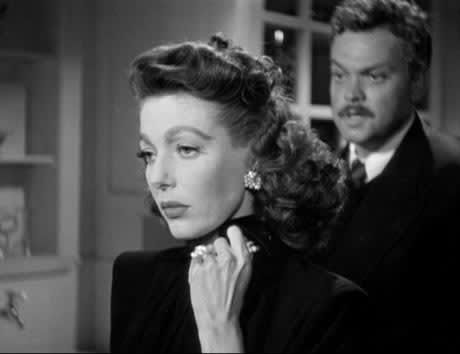A beautiful and sharp DVD transfer accentuates this release of Orson Welless 1946 film The Stranger. The film was released as part of MGMs Film Noir series and is a welcome addition to this collection. The Stranger was released during Welless most successful artistic period, which included landmark films Citizen Kane and The Magnificent Ambersons. According to imdb.com, this film was Welless least favourite. After watching this finely crafted movie, its hard to imagine why. The films action surrounds the efforts of Inspector Wilson (the always dependable Edward G. Robinson) to track Professor Charles Rankin (an exceptionally creepy Orson Welles, who slips into a subtle German accent frequently throughout the film), a small-town teacher who Wilson believes is an escaped Nazi involved in setting up concentration camps. Wilson thinks that Rankin is posing as an American schoolteacher to escape persecution. The beautiful Loretta Young is Mary, Rankins new wife, whos initially oblivious of her husbands true identity. Hollywood just doesnt produce starlets with this kind of grace and natural beauty anymore. The film follows many of the conventions of film noir the presence of a hard-boiled detective and the prevalent use of shadows. Welless eye for shadow and chiaroscuro is aesthetically gorgeous, adding a level of visual beauty and complexity to the simple story. Welless direction does suffer from frequent lags in pace, a difficulty any watcher of Citizen Kane is acutely aware of. However, his use of long shots, cranes and creative angling provide the freshness that makes this film more than just a simple whodunit. It is an excellent example of the Film Noir period. The DVD is unfortunately barebones, as a featurette would have provided some interesting insights into the process of this film's production. The Stranger is also historically significant, as it features the first use of a concentration camp post-WWII. The images of the dead and gas chambers are still haunting today, so its chilling to think what effect that footage elicited in an audience just one year removed from wartime. This is an excellent film well worth watching.
(MGM / Fox)The Stranger
Orson Welles

BY Drew WilliamsonPublished Aug 27, 2007